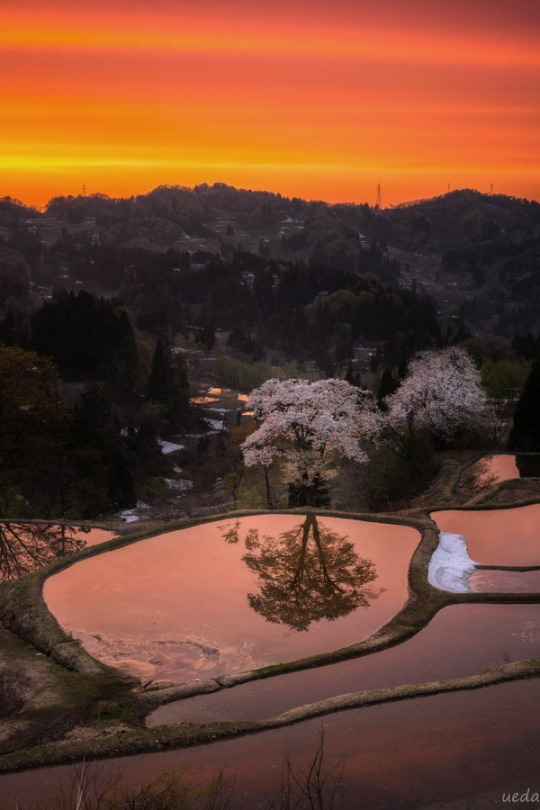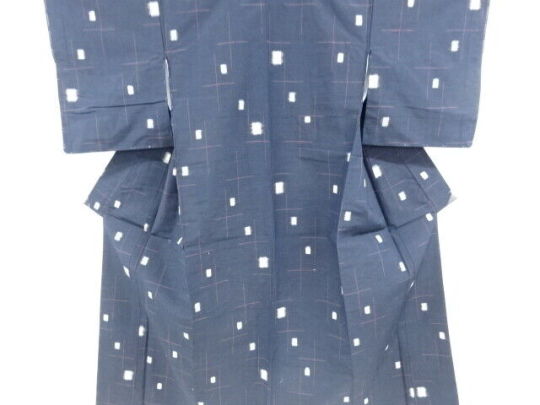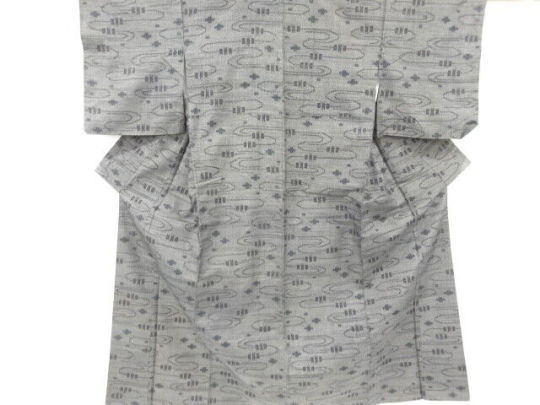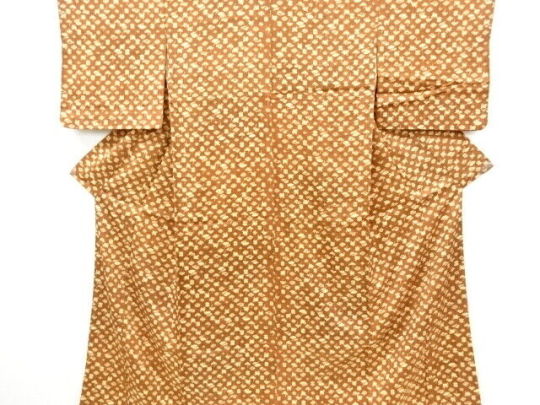#tokamachi
Explore tagged Tumblr posts
Text

"A WOMAN IN A STRAW RAINCOAT" // 1956 HIROSHI HAMAYA 濱谷 浩 | TOKAMACHI, NIIGATA [gelatin silver print | 30 x 20 cm.]
#hiroshi hamaya#photojournalism#modern art#film photography#analog#black and white#monochrome#tokamachi#niigata#50s#japanese#photography#u
136 notes
·
View notes
Text

Kiichi Asano, Tokamachi, 1957
310 notes
·
View notes
Text

A woman in a straw raincoat, Tokamachi, Niigata, 1956
Hiroshi Hamaya
311 notes
·
View notes
Text
新潟県
Japanese Prefectures: Chūbu - Niigata
都道府県 (とどうふけん) - Prefectures of Japan
Learning the kanji and a little bit about each of Japan’s 47 prefectures!
Kanji・漢字
新 あたらしい、あらた、にい~、シン new
潟 かた、がら���lagoon
県 ケン prefecture
中部 ちゅうぶ Chūbu, Central Japan, the central region of Japan
Prefectural Capital (県庁所在地) : Niigata (新潟市)

Niigata Prefecture is famous for its high-quality rice, sake, spectacular fireworks displays in winter, skiing in winter, and hot springs year-round. Niigata lies along the Sea of Japan and includes the offshore islands of Sado and Awa. Silt deposited by the Shinano and Agano rivers has created the lowlying Echigo Plain in the central part of the coastline, where the majority of the prefecture's population live. Most of the cities are along the coast as the rest of the prefecture is mountainous.
Recommended Tourist Spot・おすすめ観光スポット The Katakai Fireworks Festival - 片貝まつり

Katakai Fireworks Festival (source)
The Katakai Fireworks Festival is an annual autumn celebration at Asahara Shrine. Fireworks serve as dedications to the shrine, with individuals and companies expressing their sentiments by contributions to the display. The display contains the "yonshakudama" firework, the world's largest firework with an 800-meter diameter, and is listed in the Guinness Book of World Records.
In the morning, the town of Katakai is full of traditional events like the dedication of firework balls to Asahara Shrine, and rituals praying for the success and safety of the upcoming display.
Other fireworks festivities include the Gion Kashiwazaki Festival Sea Fireworks (July 26th) which illuminates the night sky over the sea; the Nagaoka Festival Grand Fireworks Show (August 2nd & 3rd) which unfolds along the banks of the Shinano River; and the winter display of Echigotsumari Fireworks in the snow (Late February) where fireworks color ethereal flower fields of light on snowy plains.
Regional Cuisine - 郷土料理 Hegi-soba (Buckwheat noodles) - へぎそば

Hegi-soba (source)
Soba is usually made with soba flour and wheat; however, this Niigata style soba is made by mixing a type of seaweed called funori with the seaweed. Soba originated in the Edo period, and in Niigata soba was made in an area called Uonuma. Uonuma didn't grow wheat, and so often local vegetables like ground burdock root were added to the soba flour to make noodles instead. In addition to soba, Uonuma was famous for its beautiful textiles, and when weaving the cloth, funori would be ground up and applied to the weft to stiffen the fibers and make the process easier. Someone must have come up with the idea to add funori to soba flour one day, and hegi-soba was invented.
Like zaru-soba, hegi-soba gets its name from the rectangular serving tray in which it is served. The verb hagu means to strip or peel, and in many dialects of the Kanto region it is pronounced hegu. The trays made from planed wood were called hegi. Thus the soba, wound by hand into bite-sized portions and layered on the tray, is called hegi-soba.
The funori makes the noodles a little more slippery than regular soba noodles but the taste doesn't differ much. The best way to enjoy hegi-soba is to dip the noodles into the dipping sauce, or mentsuyu, to get a base flavor. Then, try it with some hot Chinese mustard: Spread a little mustard on the soba, then dip the soba into the mentsuyu without letting the mustard and mentsuyu mix. Next, add sliced green onions to the mentsuyu and dip in your noodles. Finally, add some ground sesame seeds to the mentsuyu and try out that taste.
Hegi-soba is the pride of Niigata, such that you can get a special Soba Ticket in the city of Tokamachi, which gives you two 500-yen vouchers for soba, usable at 14 different restaurants in the city.
Niigata Dialect・Niigata-ben・新潟弁
Niigata-ben has three different classifications - two on the mainland (Tōkai-Tōsan dialect and Tōhoku dialect) and one on Sado Island (Sado dialect).
あちこたねぇ achi kota nee
Standard Japanese: たいしたことない、大丈夫、心配ない (taishita koto nai, daijyoubu, shinpai nai) English: trivial, not amounting to much, it's okay, don't worry about it
あちこたねぇよ、きっと大丈夫だから achi kota nee yo, kitto daijyoubu dakara
心配ないよ、きっと大丈夫だから shinpai nai yo, kitto daijyoubu dakara
Don't worry, it's going to be okay
2. かんべんね kanben ne
Standard Japanese: ごめんね (gomen ne) English: I'm sorry
あー!かんべんね。忘れちゃった。 aa! kanben ne. wasurechatta.
あー!ごめんね。忘れちゃった。 aa! gomen ne. wasurechatta.
Ah! I'm sorry. I forgot.
3. ごおぎ (gougi)
Standard Japanese: 大変、ものすごく (taihen, monosugoku) English: immense, greatly
これはごおぎ難しいね kore wa gougi muzukashii ne
これはものすごく難しいね kore wa monosugoku muzukashii ne
This is very difficult, isn't it
4. なじらね (najirane)
Standard Japanese: い��がですか、調子はどうですか (ikaga desu ka, choushi wa dou desuka) English: how are you, how are things
A: 今日はなじらね? kyou wa najirane? B: ばっかいいて~ bakka ii te~
A: 今日は調子どう? kyou wa choushi dou? B: すごくいいよ~ sugoku ii yo~
A: How are you doing today? B: Really good~
5. そいがー (soi gaa)
Standard Japanese: そうなんだ (sou nan da) English: oh really, oh I see
A: この前ぽんしゅ館に行ってきたて~ Kono mae Ponshukan ni itte kita te~ B: そいが? Soiga?
A: この前ぽんしゅ館に行ってきたんだよ Kono mae Ponshukan ni itte kitanda yo B: そうなの? Sou na no?
A: The other day I went to Ponshukan* B: Oh really?
*Note: Ponshukan shops are located inside three major JR stations in Niigata, this sake "theme park" where you can sample leading local sake brands, purchase sake-related goods, and even soak in a sake hot spring bath.
More Niigata dialect here (JP).
#japanese prefectures#日本語#japanese#japanese language#japanese langblr#langblr#studyblr#都道府県#新潟県#niigata
111 notes
·
View notes
Text

by Kiichi Asano / 浅野喜市 Tokamachi, 1957
238 notes
·
View notes
Photo

Cherry blossoms blooming in the terraced rice fields taken in Tokamachi City, Niigata Prefecture, Japan. Photography by Koki UedaMore
168 notes
·
View notes
Text



6674388 JAPANESE KIMONO ANTIQUE KIMONO TOKAMACHI TSUMUGI WOVEN STREAM ebay sou_japan
6823767 JAPANESE KIMONO ANTIQUE KIMONO TSUMUGI WOVEN SHIKISHI PATTERN
6825601 JAPANESE KIMONO VINTAGE KOMON KIMONO FLOWER & FOLDING FAN PATTERN
5 notes
·
View notes
Text
Kiyotsu Gorge Tunnel Blends Nature With Art *Activity Archive*
Nestled in one of the three largest gorges in Japan, Kiyotsu Gorge Tunnel has been turned into an exhibit of art and nature. The 750-meter tunnel includes four different sections, three of which branch off from the main tunnel and one at the very end, where you’re sure to get some interesting photos, especially if there aren’t too many people. While it’s not as big as I thought, it does make for a fun half-day trip.

The tunnel’s location in Tokamachi makes it a little difficult to get to, but it’s about 2 hours from Niigata City by car on the toll roads and 1.5 hours from Joetsu. You can use trains and buses to get there, but since it’s a 30-minute walk from the closest bus stop, that’s definitely something to consider. Once there, it’s relatively easy to find and only around 1000 yen to get in. The four sections of the tunnel are open to the outside, giving you wonderful views of the gorge’s rocks and river. However, it’s also an art exhibit with unique and interesting experiences in each section, as well as in the main walkway of the tunnel.

The main tunnel is rather dark and lined with different sections of colorful lights, which is why it is sometimes called the Tunnel of Lights. In some areas, they even play music meant to increase the mystery and curiosity but may come off as a little creepy to some, especially in the dark. The tunnel’s first branch-off is rather plain, allowing you to simply enjoy the gorge and its interesting rock formations. The next section is a stark contrast, with white and black stripes painted on the walls to create an almost warped appearance. A mirror structure sits in the center to reflect the paint and block the view of the gorge, though you can walk around it and even go inside where there’s a hidden bathroom with a one-sided mirror. The third section is more open, almost like the first but the walls are dotted with mirrors backlit by orange lights. They called them waterdrops, and while I’m not sure orange made me think of water, they were pretty cool.




The last section at the end of the tunnel is Panorama Station. This section is in most pictures you’ll see if you look up Kiyotsu Gorge Tunnel as it’s the signature location. Next to the tunnel’s opening is a shallow pool of reflective water, allowing you to capture stunning photos of your silhouette against the gorge and reflected back in the pool. We were lucky enough to be there on a less crowded day, making it easy to get pictures of just us, but even the pictures with other people in them tend to turn out nice. Just be careful in the water and consider bringing a towel, since it can be cold and while the sides are very shallow, the middle can be up to your knee in some places.

Given the more remote location, there’s not much in terms of restaurants and shops in the immediate area. However, there is one small shop nearby that sells some snacks and souvenirs and even has a small foot bath on the second floor. The foot bath is surrounded by sloping wooden ceilings that lead up to a window and set of mirrors, which allow you to see the gorge’s river even from inside. It’s certainly a nice resting place after walking to the end of the tunnel and back.


If you’re looking for somewhere nice to spend some time where you can be close to art and nature, Kiyotsu Gorge Tunnel is a great option. Between the unique views in each section and the beautiful views of the gorge river–both inside and outside the tunnel–it’s certainly one place in Niigata to put on your list if you have the time.
#kiyotsu gorge#kiyotsu gorge tunnel#kiyotsukyo#niigata#edgeofniigata#enjoyniigata#ourniigata#japan#activityarchive
2 notes
·
View notes
Text
Take Japanese word/name.
Add -s/-is/-us at the end.
Abashiriis Aimius Akaneis Akifumius Akihikos Akiras Akuneus Amaus Ananus Anzuis Aoius Aridas Arihiros Arinobus Asagois Asakois Asakuchiis Asakurais Ashibetsuis Ashibetsus Ashibetsuus Asukaus Atsumiis Atsutous Ayanous Bunkyos Chies Chikaraus Chikushinois Chikushinos Chiryuis Chisatois Chiyokois Chiyos Chuous Daichis Daichius Echizenus Eniwas Erikos Eris Erius Etsukos Fujiokas Fujius Fukumis Fukuokais Fukushimas Fumitos Futtsuus Genjiros Ginis Habikinos Hachimantaius Hakuiis Hanamakis Haruchikas Harues Haruhikos Harumius Harunas Hashimas Hashimotous Hayanariis Heisukes Hideharus Hidemasas Hideyoshis Higashiomius Himekois Himekos Hinatas Hirojius Hiromitsus Hiromus Hironoris Hiroshimas Hiroshis Hisahitois Hisatakais Hisayois Hisayos Hisayukis Hitomius Ibaras Ibusukis Ichiharaus Ichinosekis Ichiros Iehisaus Iemasaus Ikumiis Imizus Inabes Inagius Ioris Isahayas Ishikarius Iyois Iyous Joyois Jukichiis Kadomaus Kahos Kaiis Kaitos Kaitous Kakamigaharais Kakichis Kakogawas Kakogawaus Kakuis Kakujiis Kakujius Kanameis Kanesukeus Kankuros Kansukeus Kaoruus Kasaiis Kashiharais Kashiwaraus Kasumis Katsuhisas Katsumis Katsumotois Katsumotos Katsuos Katsuragius Katsutaros Katsuuraus Katsuyamaus Katsuyaus Katsuyukiis Katsuyukis Kawagoeus Kazuhitos Kazukois Kazuyaus Keishius Ken'ichiros Ken'ichis Kenkichiis Kenkichis Kentarous Kikues Kimios Kin'yaus Kitahiroshimais Kitahiroshimaus Kitamotos Kiyokous Kiyonoris Kiyonorius Kiyoses Kochis Koichiros Koichirous Kokubunjis Komatsuus Konanus Konosukes Koshirous Kumis Kunihisais Kurumiis Kyojius Maayas Machidas Machis Madokaus Maebashis Manamis Maries Maris Masachikais Masaes Masaharuus Masahides Masaichius Masakatsus Masakazuis Masanoris Masashis Masatakes Masatous Masatsuguus Matsumotos Mayakois Megus Michihirois Michiros Michiyaus Mieis Mies Mikius Mikunius Mimasakas Mimoriis Minaeis Minamiashigaras Minamibosous Minamisatsumais Minamishimabarais Minohus Minois Mirais Mitsuakis Mitsugis Mitsuharus Mitsuhiros Mitsukos Mitsunorius Mitsuos Mitsuruus Mitsuyoshius Miwas Miyakos Miyamaus Mizukois Morikazus Motohirois Motosus Mototadais Munakatas Munenoriis Musashinous Mutsumiis Myokos
Nagahideus Nagaokais Nagatokiis Nagisais Nagoyas Namiis Namis Nan'yos Naojis Naotakaus Naotakeus Nariakirais Nariyukis Natsumis Nemuros Nishiwakis Nisshins Noas Nobeokas Nobuakius Nobukatsuis Nobunarius Nobuyoshiis Nomius Nonoichis Noriakis Norihikois Norihikos Noriyoshius Obus Odais Odawaras Ogakis Oitais Okayamas Okazakiis Okazakis Okegawaus Omitamaus Onomichiis Onos Onous Osakasayamaus Rikichis Rikus Rinshos Ritsukos Rokurois Rokuros Rumoiis Rurikos Ryojis Ryokos Ryosukes Ryotaros Ryusukeis Ryutarous Ryuyaus Sadaharus Sadayoshis Sagas Saiichis Sakaiis Sakatas Sakies Sasebous Sattes Sayamas Sayas Sayumis Seigois Seishirois Seiyos Sekius Sembokus Sendaius Setsukos Shibetsuus Shibukawas Shigeakis Shigekos Shigerus Shiinais Shimodais Shin'ichius Shingos Shintaros Shisois Shizuokas Shobarais Shoheis Shojiros Shokous Shoyaus Shunans Shusakuis Shusakus Shusukeis Suitais Sukagawas Suzakaus Suzuis Tadachikas Tadaharuis Tadamasais Tadanaous Tadashius Tadatakas Tadaterus Tadatsuneis Tadayoshis Tagawas Taijius Takafumis Takahides Takahisais Takanobus Takaokas Takarazukaus Takashimais Takashimaus Takashis Takatomiis Takaujis Takayasuis Takayasus Takeharas Takehiros Takekois Takeos Takerus Takezos Takikawas Takujius Takumius Takuois Takutos Takutous Tamas Tatsuhirois Tatsujis Teijiros Teikous Tendois Teruos Teruyoshis Teruyukius Tetsujis Tetsushiis Tetsuzous Toganes Togois Tokamachis Tokikois Tokukous Tokutaros Tomochikaus Tomohikous Tomohirois Tomokous Tomonobuus Tomos Tomotakaus Toshiakius Toshihideis Toshihisas Toshihitos Toshikazuis Toshinagaus Tottorius Towadas Toyokazus Toyoshigeis Tsukubamiraiis Tsunehisais Udais Ukihas Unnanus Urasoeus Wakayamais Warabiis Yabuus Yachiyos Yaekous Yamagas Yames Yasuhideis Yasuhirois Yasukos Yasumis Yasunaris Yasunobus Yasurois Yasuyoshis Yatarous Yoritsuguus Yoriyukius Yoshimis Yoshinaous Yoshirous Yoshiyukius Yudais Yufuis Yugois Yujius Yukikous Yukis Yurihonjos Yuris Yusukeis Yutais Yuus Yuzois
0 notes
Text
Kiyotsu Gorge 'Tunnel of Light' in Tokamachi, Japan
http://dlvr.it/StfcPH
0 notes
Text



My first visit to Eden Herb Garden in Matsunoyana Kurokura in 2016. I liked the place. 2 years later, I rent this land from Tokamachi City government to plant fruit trees.
2016/5/5
1 note
·
View note
Photo

【景色がよくて無雪エリアで車の乗り入れ可能なおすすめのキャンプ場教えてください!】 『Day2416-6-063』 Ao made the lucky charm called "Chinkoro" today at the nursery school. It is a handicraft made from shinko (rice flour) and is a tradition of Tokamachi City. The more cracks as they are broken, the happier you will be. あおが保育園で、十日町に伝わる「チンコロ」を作ってきた。 米粉で作られたチンコロは家に飾り、乾いて壊れる過程で、ひびが沢山入れば入るほど、幸せになると言われている。 あぁ、こうしてあおの保育園での行事がひとつずつ終わっていく。 寂しいなぁ。 保育園に通わせる前、「保育園なんて病気もらってくるだけなんじゃない?」などと捻くれた考えしか持っていなかったけれど、終わりが近づいてみると感謝しかない。 コロナ禍で色々とイベントが制限される中、子どもたちに可能な限りさまざまな経験を与えてくれた。 自分たちで畑で野菜を作り、その野菜で手作りの給食を作ってもらって…。サイコーだよね。 あぁ、来月で卒園か。本当に感謝しかありません。ありがとうございます。 さて、そんな卒園を前に、あおとお父ちゃんで軽トラに乗って旅(キャンプ)に出かけようかと思います(来週後半あたり?) あおがあまり長く車に乗っていられないので、近場で、そして、無雪エリアで思う存分走り回ろうかと思っています。 そう考えると、山を越えた群馬辺りかなぁ、と思っているのですが、景色がよくて、車の乗り入れが可能で、おすすめのキャンプ場があれば、ぜひご教示ください! よろしくお願いします! #rurallife #slowlife #notslowlife #countrylife #snowcountry #田舎暮らし #スローライフ #ノットスローライフ #6歳 #sixyearsold #あおの棚田米 #移住 #コーヒーとタープ #自家焙煎 #microroastery #microroaster #古民家リノベーション #古民家暮らし https://www.instagram.com/p/CoW5SY3PzSL/?igshid=NGJjMDIxMWI=
#rurallife#slowlife#notslowlife#countrylife#snowcountry#田舎暮らし#スローライフ#ノットスローライフ#6歳#sixyearsold#あおの棚田米#移住#コーヒーとタープ#自家焙煎#microroastery#microroaster#古民家リノベーション#古民家暮らし
0 notes
Photo

十日町市(旧川西町),信濃川左岸の河岸段丘より 越後山地 Echigo Range from the post-harvest rice paddies on the river terrace of the Shinano-gawa River.
#nature#landscape#mountain#mountain spotting#november#echigo range#echigo sanzan#makihatayama#tokamachi#niigata#japan#original photography#11月#越後山地#越後三山#巻機山#十日町市#新潟#山座同定
17 notes
·
View notes
Photo

Volumes & voids, Tokamachi, Niigata | © Jan Vranovský, 2018
#Japan#Niigata#Tokamachi#photography#architecture#urban#street#streetphotography#architecturephotography#urbanlandscape#contemporaryphotography#documentingspace#parallelworld#mundane#banal#gray#colorless#concrete#soft#weird#empty
836 notes
·
View notes
Text

by Kiichi Asano / 浅野喜市 Tokamachi, January, 1957 / 十日町
198 notes
·
View notes